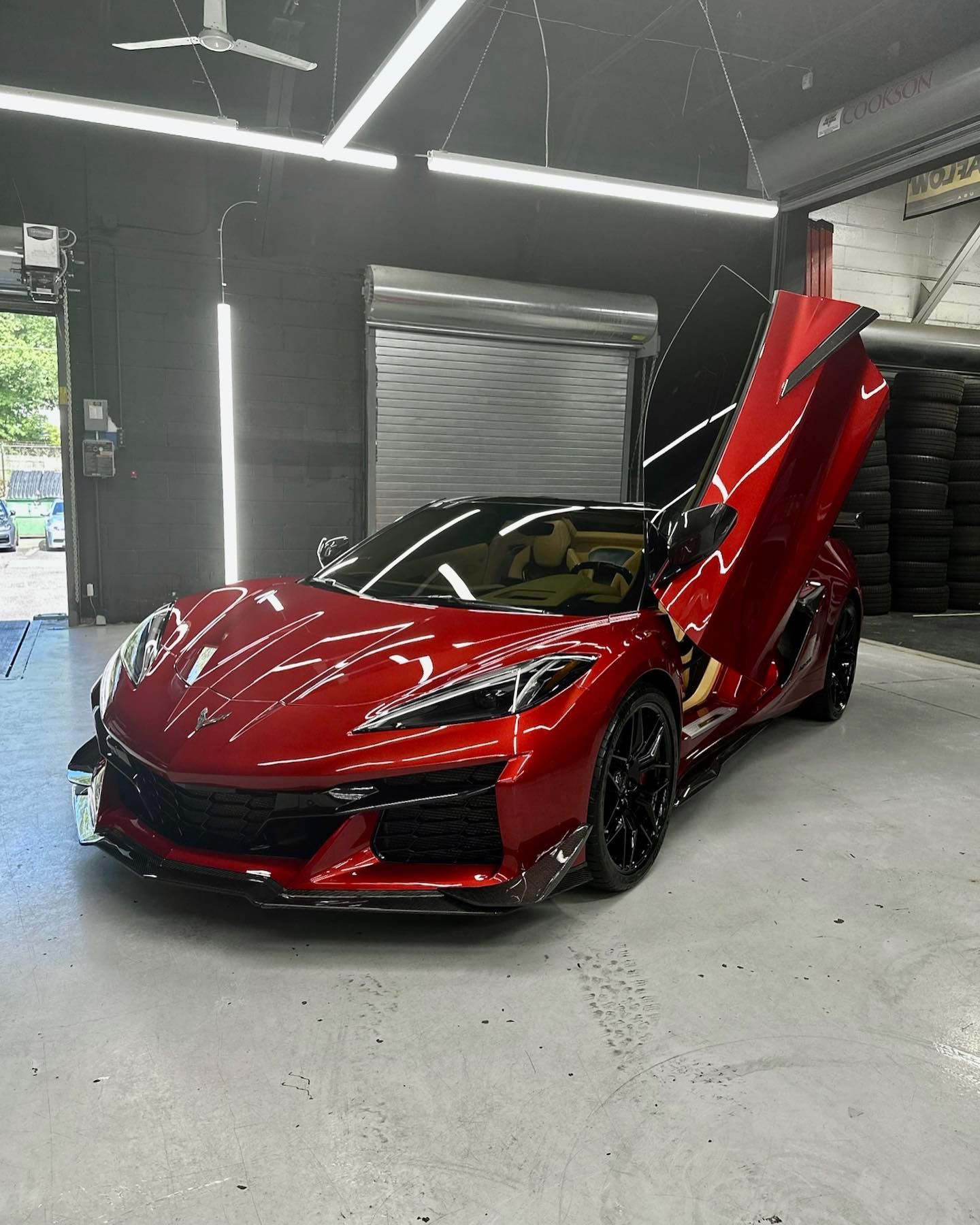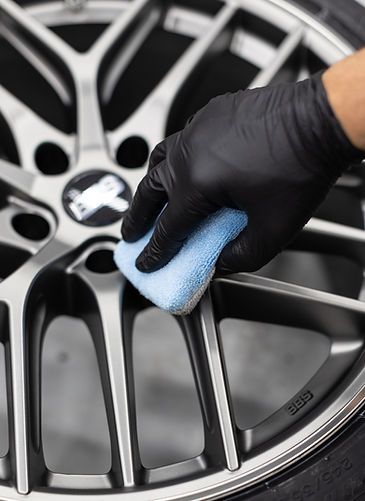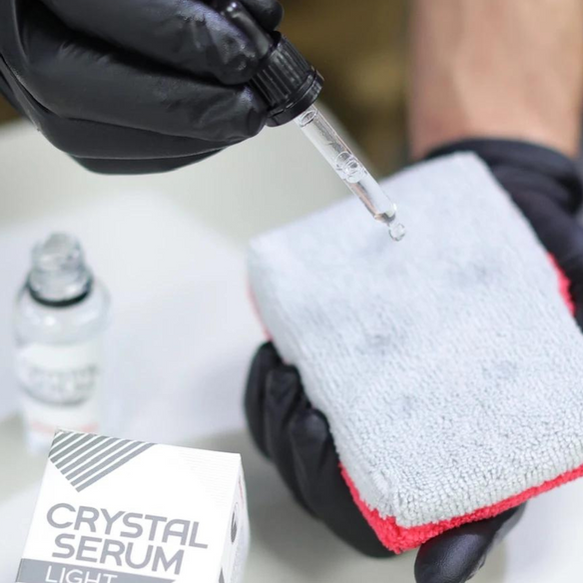How Long Does Ceramic Coating Last? When to Reapply for Maximum Durability
GET A FREE ESTIMATEWhen it comes to protecting your vehicle's paint, many car owners are left wondering about the best options available. With so many products on the market, you might feel overwhelmed, though you're not alone in searching for that ideal shield against dirt and damage. This is where ceramic coatings become crucial. These innovative solutions ensure durable protection while enhancing the shine of your vehicle.
Ceramic coatings typically last between 2 and 5 years, depending on factors such as product quality and maintenance. It is advisable to reapply the coating after this period to maintain optimal protection, and, before reapplication, ensure that any remnants of the old coating are polished off for the best adhesion and performance.
What is Ceramic Coating?
Ceramic coating is essentially a liquid polymer that, when applied to the exterior surfaces of your vehicle, forms a chemical bond with the factory paint. This process creates a robust protective layer that significantly elevates your car's defense against various environmental aggressors like UV rays, mud, bird droppings, and stubborn chemical stains. Unlike conventional waxes that merely sit atop your car's paint, ceramic coatings penetrate and adhere thoroughly, making them far more durable. The beauty of ceramic coating lies in its molecular structure. When cured, it hardens into a shield that protects the paint and enhances it. Imagine standing beside your freshly coated car on a bright day; the sun gleams off its surface beautifully, showcasing a gloss that's often unmatched by wax alone. High-quality ceramic coatings may last from two to five years—sometimes even longer with proper maintenance!
Many users rave about the hydrophobic nature that comes with ceramic coatings. This means that once your vehicle is treated, water and grime simply bead up and slide off the surface, as if the paint has been treated with a magical force field. It's akin to having your own personal armor against life's messiest moments. Just picture driving down a muddy road and then effortlessly hosing off the muck afterward—not only does it save time, but it makes caring for your vehicle so much easier. Advances in ceramic coating technology truly reflect significant improvements in ease of use compared to traditional methods. However, it’s crucial to note there are different levels of quality among ceramic coatings. Some cheaper alternatives may not provide the same level of protection or longevity as their premium counterparts. Users should be wary of those products marketed as “ceramic” but don’t perform optimally.
Average Lifespan of Ceramic Coating
Generally, ceramic coatings offer a robust framework for protecting your vehicle’s finish, typically lasting between 2 and 5 years. This duration hinges on several pivotal factors. If you invest in a high-quality product, you might push that lifespan to an impressive 7 years. However, this premium edge is only as durable as the care it receives. Many users report experiencing a more practical lifespan closer to 3 to 4 years, especially with diligent maintenance. Regular upkeep keeps your vehicle looking stellar and ensures that the protective layers remain effective against environmental elements. For example, a vehicle parked under harsh sunlight or frequently exposed to road grime may see its coating diminish more quickly than one sheltered from these conditions. The observed disparities in longevity aren't merely tied to the features of the ceramic coating itself; they are also influenced by external factors.
Factors Affecting Lifespan
One of the primary influences on your coating's durability is how you care for it. Regular maintenance—like utilizing pH-balanced shampoos and applying ceramic boosters—can significantly extend its life and efficacy. Think of it as giving your vehicle a spa day! When you treat those surfaces right, they reward you with enhanced shine and protection. Here are some main factors that affect how long your ceramic coating will last:
- Environmental Conditions: Sun exposure and road debris can wear down coatings quicker.
- Quality of Application: A properly applied coating bonds better, which translates into longevity; too rushed an application can lead to premature failures.
- Consistency in Maintenance Routines: Washing your car with the right products helps maintain integrity.
- Product Quality: Higher SiO₂ content in premium products generally equates to stronger bonds and longer-lasting protection.
Keeping all these areas in mind allows you to make informed decisions when selecting and caring for your ceramic coating, ensuring it performs optimally throughout its intended lifespan. As you navigate through the choices available, understanding how care routines can impact everything from gloss retention to water repellency will guide you toward maximizing your investment in protection.
Key Factors Affecting Durability
One major influence on the longevity of a ceramic coating is environmental conditions. Vehicles that face harsh climates experience significantly increased wear on their coatings. For example, vehicles parked in areas with intense sunlight or extreme cold can suffer from premature degradation due to thermal stress. Similarly, those living near coastal regions must deal with salt-laden air, which can erode coatings over time if they are not properly maintained. Exposure to contaminants like tree sap, road grime, and bird droppings can also significantly reduce the effectiveness of a ceramic coating. Prompt cleaning of such elements is imperative to minimize damage. Another critical aspect is your maintenance routine. Regular care can ultimately extend the life of your ceramic coating, making it vital to adopt a washing schedule that employs pH-neutral soaps specifically formulated for ceramic surfaces. This helps maintain durability while ensuring that harmful chemicals don’t strip away the protective layer. Just as one would opt for gentle skincare products to preserve skin health, using low-quality cleaning agents on your vehicle might lead to adverse outcomes over time.
The impact of driving habits shouldn’t be overlooked either. If you frequently drive on rough off-road terrains or extensive highways, you expose your vehicle to more dirt and debris, speeding up the degradation process. A study found that cars predominantly used in urban settings—where roads tend to be cleaner and less demanding—showed improved longevity of their coatings compared to rural counterparts faced with varied conditions. Understanding these factors drives actionable decisions regarding your vehicle care. By identifying environmental risks or adjusting your washing habits, you can optimize the lifespan of your coating significantly.
Recognizing Reapplication Signs
Understanding when it's time to reapply your ceramic coating is essential for safeguarding your vehicle's appearance and value. One of the most obvious indicators that it's time for a touch-up is diminished water beading. Typically, a freshly applied ceramic coating will cause water droplets to bead up tightly, almost like tiny pearls sitting on top of the surface. As the coating diminishes in effectiveness, you'll notice that water begins to spread out rather than bead, indicating a reduction in those all-important hydrophobic properties. Another clear sign is the gradual fading of gloss and shine. When you first had the ceramic coating applied, the reflective quality of your paint was likely striking—like looking into a mirror. Over time, however, as environmental elements such as UV rays and dirt accumulate, you may find that the once vibrant sheen has dulled significantly. This loss of gloss not only affects aesthetics but also points to a breakdown of the protective layer itself.
You might also want to keep an eye on how easily dirt accumulates on your car's surface. If you notice that grime seems to cling more readily to your vehicle after it rains or following a drive through dusty conditions, it could be another warning sign indicating that the coating's performance is waning. These indicators are critical; however, effective maintenance can delay the need for reapplication. Regularly washing your car with pH-neutral soap and applying maintenance products specifically formulated for ceramic coatings, like Graphene Detail Spray, can significantly prolong their lifespan and functionality. Think of it as giving your car its own skincare routine. Just as a little moisturizer can keep skin healthy and vibrant for longer, upkeep helps maintain your vehicle’s ceramic coating and overall appearance.
Finally, integrating regular surface inspections will serve as a helpful practice over time. Utilizing both visual inspections under varying light sources can reveal imperfections that often escape casual observation. It's almost like putting on glasses for the first time—you suddenly see details you didn't even know existed! On top of this, tactile evaluations—running your fingers across the surface—can help reveal rough patches that indicate compromised protection. By staying vigilant about these signs and engaging in proactive maintenance, you ensure your ceramic coating continues to perform at its best.
Effective Maintenance Tips
Proper maintenance can significantly extend the lifespan of ceramic coatings. One of the most effective strategies involves regular washing. It’s recommended to wash your car every two weeks using a pH-neutral shampoo. This is crucial because standard soaps or harsh detergents can break down the protective layer faster than you'd expect. A pH-neutral formula cleans effectively without jeopardizing the coating, maintaining that glossy finish we all love. Plus, washing prevents dirt and contaminants from accumulating and deteriorating the coating over time. In addition to monitoring your washing habits, it's essential to avoid automatic car washes. Sure, they might be convenient when you're in a hurry, but those brushes can be abrasive and may wear down your ceramic coating. Consider this: each time that brush rolls across your paint, it’s like sandpaper against a delicate surface. If you must wash your car with this method, it's wise to select an automatic wash that uses only soft cloths rather than brushes.
To keep the hydrophobic properties of your ceramic coating intact, applying ceramic boosters every few months is a brilliant move. These specialized products are designed to rejuvenate the original layer and enhance its performance. Incorporating them into my routine not only keeps the shine alive but also boosts water-repellent characteristics, making it easier for rainwater and debris to slide off instead of bonding with the paint. Proper storage also plays a key role in maintaining your ceramic coating's integrity. Whenever possible, try parking in a garage or using a quality car cover. This practice shelters the vehicle from harmful environmental factors like UV rays, bird droppings, and tree sap that can tarnish even the most resilient coatings. It's surprising how much protection you gain just by keeping it out of direct exposure! Regular maintenance doesn’t take long when you set up good habits; think of it as investing a little time now to save you big in both repairs and detailing costs down the road.
By integrating these practices into your routine, you ensure that your ceramic-coated vehicle remains in top condition. Consistent washing schedules, avoiding aggressive cleaning methods, utilizing boosters regularly, and effective storage will not only enhance the vehicle's appearance but also protect its value over time.
Alternatives to Ceramic Coating
- Traditional Waxing: One of the most time-honored methods of paint protection, traditional waxing—often using Carnauba wax—remains a popular choice for its rich, deep shine and easy application. This method enhances a vehicle’s visual appeal with a glossy, showroom-like finish that many car enthusiasts appreciate. However, the protection it offers is short-lived. Wax coatings typically last only a few weeks to a few months, especially when exposed to strong sunlight, rain, or road contaminants. For those who enjoy regular vehicle upkeep and value immediate aesthetic results over long-term durability, waxing can be a rewarding option—but it demands consistent reapplication to maintain its effects.
- Paint Protection Film: Paint protection film is a premium option that offers physical protection unmatched by waxes or liquid coatings. Made from a clear, durable urethane material, PPF is applied directly to the vehicle’s surface, forming a nearly invisible shield that defends against rock chips, road debris, swirl marks, and minor abrasions. Some high-end PPF products feature self-healing properties, allowing light scratches to disappear with exposure to heat. While the initial cost of PPF is higher, its long-term durability and low maintenance needs make it an excellent investment for those seeking comprehensive and long-lasting protection. It’s especially ideal for high-traffic areas such as bumpers, hoods, and side mirrors.
- Graphene Coatings: Graphene coatings represent a newer advancement in automotive surface protection, offering benefits similar to ceramic coatings—with a few notable upgrades. Derived from a single layer of carbon atoms arranged in a hexagonal lattice, graphene is known for its extreme strength, flexibility, and conductivity. When used in automotive coatings, it delivers strong hydrophobic performance, excellent gloss, and extended longevity. Additionally, graphene coatings are often easier to apply than ceramics and are less prone to water spotting. For DIY enthusiasts or detailers looking for cutting-edge protection without the steep learning curve or high cost of professional ceramic coating installation, graphene is an appealing alternative.
Selecting the best protection method for your vehicle depends on your personal preferences, maintenance habits, and budget. Whether you're drawn to the shine of traditional wax, the durable shield of PPF, or the technological edge of graphene coatings, understanding the strengths and limitations of each helps ensure your investment aligns with your expectations. Evaluate your daily driving conditions, your long-term goals for vehicle care, and how involved you want to be in the upkeep process before making a decision.
Unbeatable Ceramic Coating Solutions in Elmwood Park, NJ
Automotive Specialty Wraps brings
unmatched ceramic coating expertise to Elmwood Park, NJ—offering a superior level of paint protection for daily drivers and automotive enthusiasts alike. Their coatings form a durable, hydrophobic layer that shields your vehicle from harsh weather, UV damage, and surface contaminants while enhancing gloss and ease of maintenance. With precise application techniques and a commitment to long-term protection, Automotive Specialty Wraps ensures your vehicle stays protected and polished with every mile.
Schedule your ceramic coating service today and experience craftsmanship built to last!






